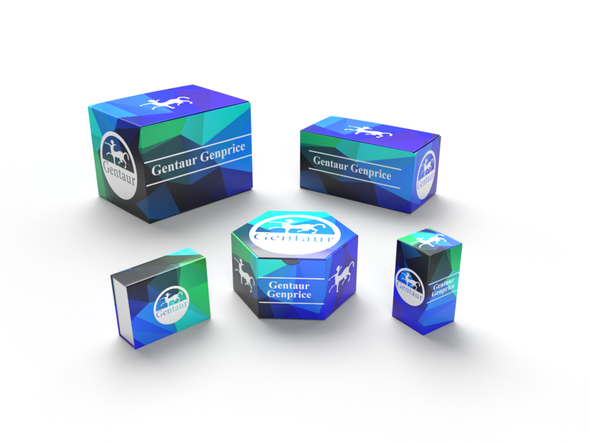740
Human Krueppel-like factor 2 (KLF2) ELISA Kit | AE58441HU
- SKU:
- 740-AE58441HU
- Availability:
- Usually ships in 5 working days
Description
Human Krueppel-like factor 2 (KLF2) ELISA Kit | AE58441HU | Gentaur UK, US & Europe Distribution
Species Reactivity: Human (Homo sapiens)
Abbreviation: KLF2
Alternative Name: LKLF; Kruppel-like factor|Kruppel-like factor LKLF|lung Kruppel-like zinc finger transcription factor
Application: ELISA
Range: 0.156-10 ng/mL
Sensitivity: 0.058 ng/mL
Intra-Assay: ≤4.5%
Inter-Assay: ≤7.8%
Recovery: 0, 96
Sample Type: Serum, Plasma, Other biological fluids
Detection Method: Sandwich
Analysis Method : Quantitive
Test Principale: This assay employs a two-site sandwich ELISA to quantitate KLF2 in samples. An antibody specific for KLF2 has been pre-coated onto a microplate. Standards and samples are pipetted into the wells and anyKLF2 present is bound by the immobilized antibody. After removing any unbound substances, a biotin-conjugated antibody specific for KLF2 is added to the wells. After washing, Streptavidin conjugated Horseradish Peroxidase (HRP) is added to the wells. Following a wash to remove any unbound avidin-enzyme reagent, a substrate solution is added to the wells and color develops in proportion to the amount of KLF2 bound in the initial step. The color development is stopped and the intensity of the color is measured.
Product Overview: Mature single-positive (CD4+ or CD8+) T lymphocytes enter a 'resting' state in which they are proliferatively quiescent and relatively resistant to apoptosis. Anderson et al. (1995) identified and characterized the gene for a novel zinc finger transcription factor that they symbolized LKLF for 'lung Kruppel-like factor.' Using 5-prime and 3-prime RACE on a melted GC-rich DNA fragment similar to mouse Lklf, Kozyrev et al. (1999) isolated a cDNA encoding KLF2, which they termed LKLF. Sequence analysis predicted that the 355-amino acid LKLF protein, which is 87% identical to the mouse protein, has N-terminal proline-rich repeats, a putative activation domain, a potential nuclear localization signal, and a C-terminal zinc finger domain.
Stability: The stability of ELISA kit is determined by the loss rate of activity. The loss rate of this kit is less than 5% within the expiration date under appropriate storage condition. The loss rate was determined by accelerated thermal degradation test. Keep the kit at 37°C for 4 and 7 days, and compare O.D.values of the kit kept at 37°C with that of at recommended temperature. (referring from China Biological Products Standard, which was calculated by the Arrhenius equation. For ELISA kit, 4 days storage at 37°C can be considered as 6 months at 2 - 8°C, which means 7 days at 37°C equaling 12 months at 2 - 8°C) .






